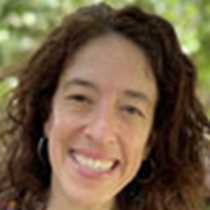Low grey clouds greeted us as we disembarked National Geographic Orion at 6:45 a.m. to make our way to Sainte-Mère-Eglise. The chilly air and early start were a fitting backdrop to our day of World War II history. Our first stop of the day showed just how much the histories of Europe and the US are intertwined, and the importance of American contributions to the end of the war. Sainte-Mère-Eglise, which some of our guests knew from the film The Longest Day, was where American paratroopers from the 82nd Airborne Division (as well as some from the 101st) dropped from the sky in the attempt to liberate the town. Many of them were shot and killed by occupying German forces as they did.
One of the most remarkable sights was the statue of John Steele, whose parachute got hung up in the church steeple. An easy target, hanging in full view of the village square, he played dead for several hours and avoided being shot. Then, German sharpshooters inside the church noticed he was alive and took him as prisoner. The apparently fast-thinking Steele escaped shortly afterwards, however. Despite heavy and early losses, the courageous paratroopers prevailed and liberated the town. Steele himself returned to Sainte-Mère-Eglise for many years afterwards for commemoration exercises.
From there, we journeyed on to Utah Beach, site of the D-Day landings on June 6, 1944. There, Allied troops landed ashore in both British and American craft; too many, as we know from our history books, lost their lives. At our next stop, the American cemetery at Colleville-sur-Mer, we got a sense of the scale of those losses. 9387 people are buried at this cemetery, and a further 1557 are named there as missing. Most were American soldiers, but the dead also included women, such as American Red Cross workers, and soldiers from Canada, Mexico, and Britain. Those numbers became real as we walked amongst the thousands of white marble crosses that marked every grave. Each one was immaculately kept, and they lined up in perfect rows from nearly every angle. We saw flowers, roses, and in one case a single pebble laid lovingly at the foot of headstones, commemorating some among the far too many lives lost. Unexpectedly, a bugle began to play “Taps” in the distance, and we stood in respectful silence to listen. It was a very moving visit, and full of emotion for many.
We were able to reflect on our experience after that in a stunning setting for lunch: the beautiful 18th century chateau, La Chenevière, at Port-en-Bessin. The chateau is also a poultry farm, and many of us enjoyed a dish of delicious locally raised chicken. After lunch, we continued our World War II commemoration with a visit to the D-Day Landing Museum at Arromanches. Because Allied forces had been unsuccessful in their attempts to capture a working port from German troops, they decided instead to build pre-fabricated harbors to supply their nearby forces. Mulberry Harbour at Arromanches was constructed from old merchant ships and enormous concrete boxes, which we could see out in the harbour. The museum itself was filled with World War II memorabilia, including a model of the original breakwater and floating causeway.
We ended our day at a much earlier moment in history. Our final stop at Bayeux was an opportunity to see the stunning Bayeux Tapestry, which dates from the 11th century. This remarkable wool tapestry is an embroidered history of William the Conqueror’s ascent to the throne, including the Battle of Hastings in 1066, and the events that led up to it.
After this day of extraordinary history, we met up with National Geographic Orion in Caen. Our expedition continues tomorrow with our final day in France before our channel crossing.









